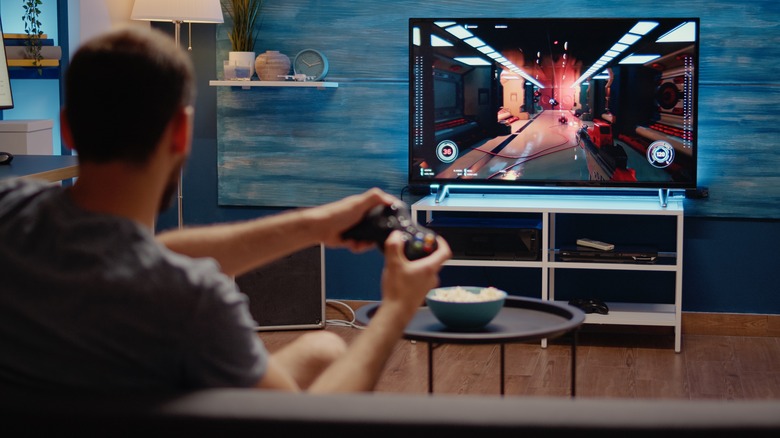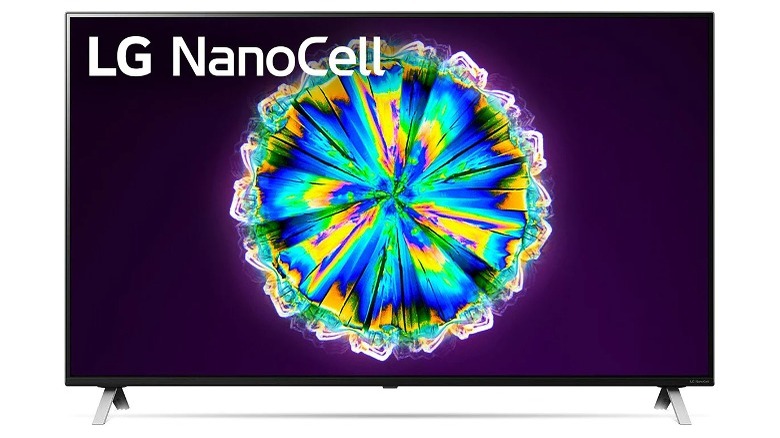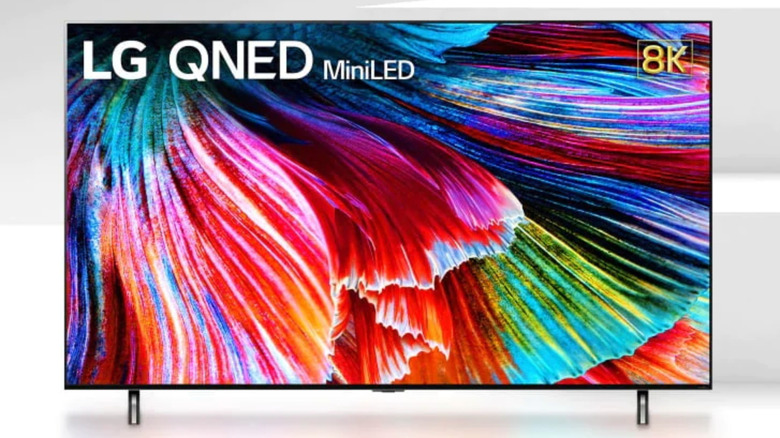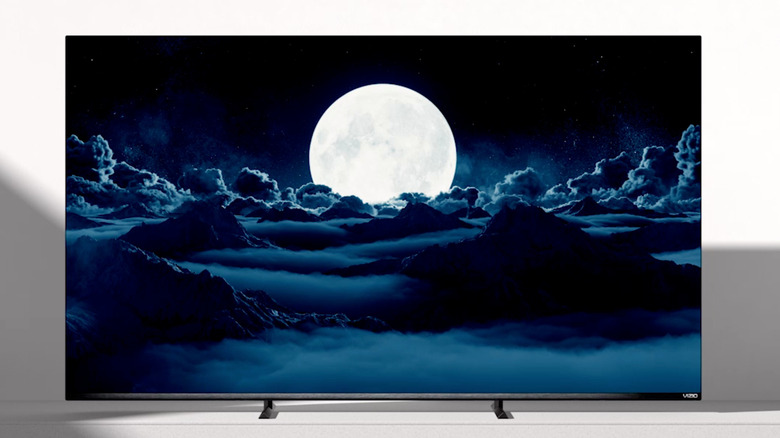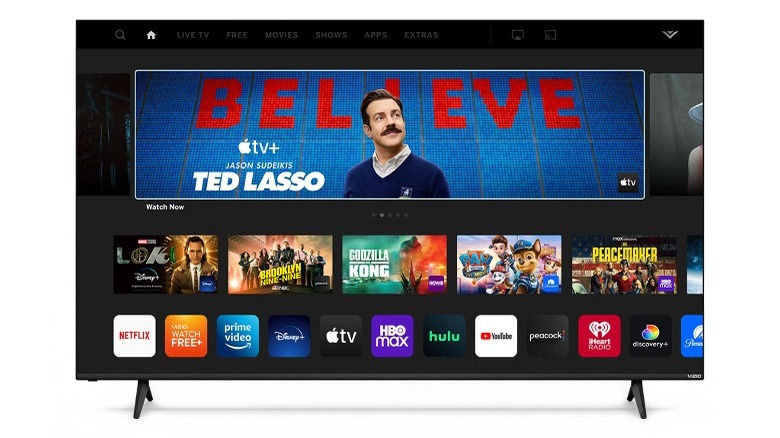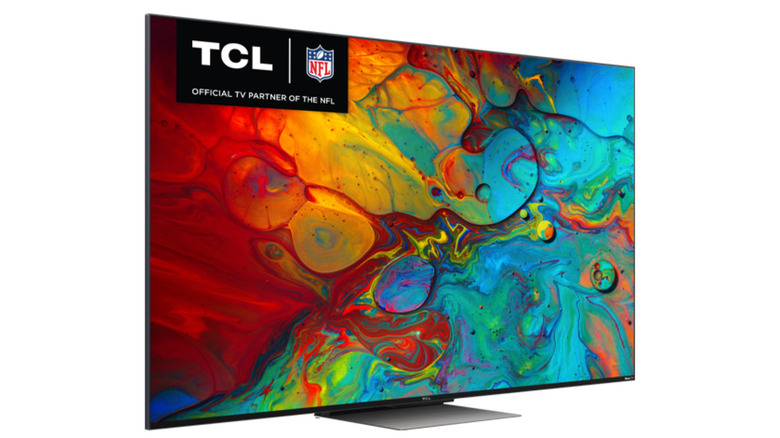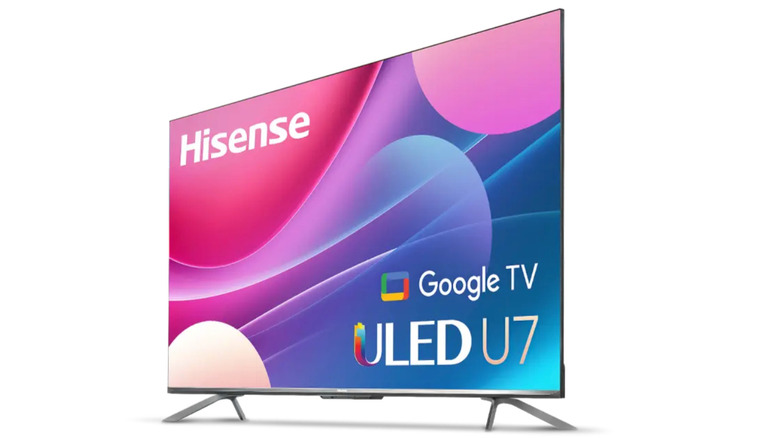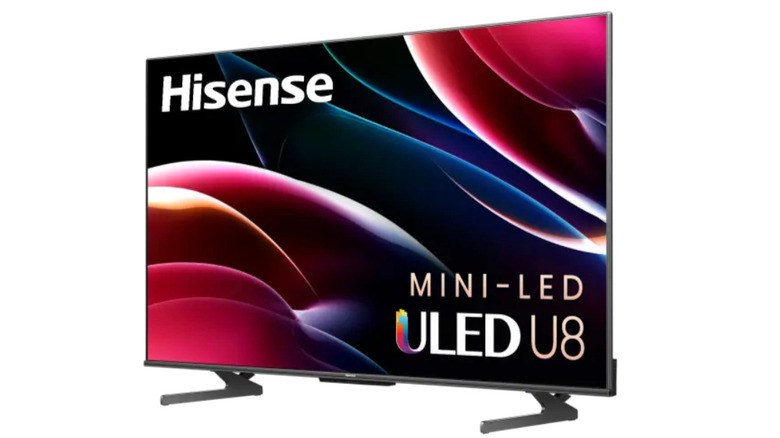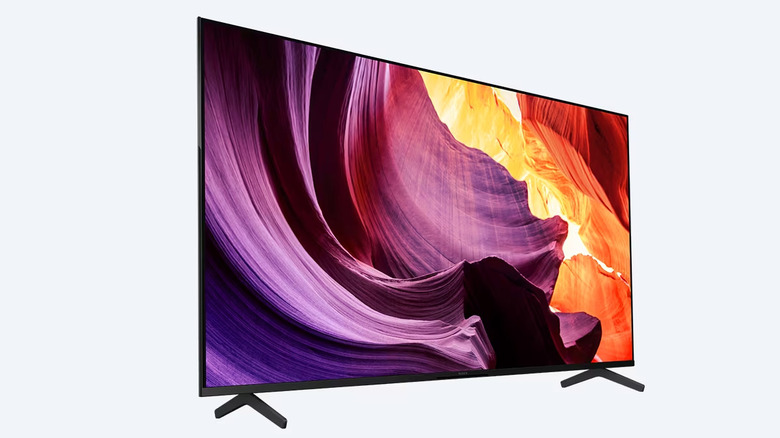8 Best Gaming TVs For Xbox And PS5 That Won't Break The Bank
Having a high-quality television is essential for an immersive and enjoyable gaming experience. However, finding the perfect gaming TV on a budget can be daunting, especially because those in the market for a gaming TV will need to invest in a screen with HDMI 2.1 capability. HDMI 2.1 is the latest version of HDMI technology and supports higher bandwidth, meaning it can transmit 4K resolution at 120hz and 8K resolution at 60hz, which provides a much smoother and more detailed gaming experience.
HDMI 2.1 also supports quick frame transport (QFT) and quick media switching (QMS), two features designed to reduce the latency between the source device and the display, resulting in a more responsive gaming experience. No matter the budget, there will always be a gaming television on the market that will meet the needs of the consumer and elevate the overall gaming experience. In fact, budget options for gaming televisions are more prevalent than ever in 2023, making now a good time to buy for those hesitant on paying an exorbitant amount of money on a new display.
Here are eight of the best budget gaming televisions for next-gen consoles like the Xbox Series X and PlayStation 5.
LG Nano 85
Consumers can't go wrong with an LG product, as the company is one of the best television brands in the world. LG makes televisions for consumers of various budget pools, and those looking for an affordable gaming TV are in luck as LG provides several quality options for gamers on a budget. The LG Nano 85 is a good place to start as it is an affordable, quality television that fits the needs of gamers. This 4K TV can be had a variety of display sizes starting at 49 inches that fit in any room thanks to a sleek, modern design.
The LG Nano 85 series of televisions use NanoCell technology, which improves color accuracy and contrast while providing HDMI 2.1 support, making it a great fit for those looking to play competitively online. The Nano 85 line also has a 120hz refresh rate, another must-have feature for those looking to invest in a gaming television. Most televisions feature a 60hz refresh rate, which refers to the number of times a monitor refreshes itself per second. The higher the number, the smoother the motion picture, making 120hz TVs the preferred choice for gamers.
The LG Nano 85 also supports HDR features such as Dolby Vision and HDR10 that take LG's NanoCell technology a step further with vibrant and lifelike colors. This model can be found for well under $1,000, giving gamers an affordable TV that checks every performance box while retaining the look and feel of a premium product.
LG QNED 80
LG has more than one affordable gaming television on the market, and gamers on a budget should also check out the LG QNED 80, which has a few key differences from the LG Nano 85. Perhaps most importantly, the LG QNED 80 uses a different type of display technology than the LG Nano 85. The QNED 80 opts for a QNED (quantum nano-emitting diode) display, a relatively new technology that combines NanoCell technology with quantum dot technology to provide better color accuracy, wider viewing angles, and deeper blacks than traditional LCD displays.
Those with deeper pockets will also be satisfied to know LG's QNED televisions are available in sizes up to 86 inches, while the Nano 85 is only available in sizes up to 75 inches. The QNED 80 is also the brighter television of the two, boasting a peak brightness of up to 1,000 nits compared to the Nano 85's 550 nits. All of the aforementioned advancements in the QNED 80 do lend themselves to a higher price point, but the LG QNED 80 can still be had for under $1,000, depending on size. While those simply looking for an affordable, quality TV with HDMI 2.1 support might opt for the Nano 85, the QNED 80 is a great alternative for those looking to further optimize their experience.
Vizio Class M-Series
Like LG, Vizio has multiple affordable gaming television options, even though the company has long made a name for itself as one of the top budget television manufacturers on the market. While LG is capable of producing televisions for all types of consumers, Vizio stands out for its ability to cater specifically to those looking for something affordable. Those looking to pick up a new gaming television and are familiar with Vizio's line of televisions will likely start with the Vizio M-Series, which is a great product for those looking to stick to a tight budget.
One of the main advantages of the Vizio M-Series is its 120hz refresh rate as well as its support for HDMI 2.1, a prerequisite for all next-gen gamers in 2023. The TV also makes use of Vizio's ProGaming Engine, which provides a smooth and responsive gaming experience on the back of an intelligent 4K upscaling engine that improves graphics when applicable. The Vizio M-Series also supports HDR content, including Dolby Vision and HDR10, further enhancing the television's vibrant range of colors and tones.
As an added bonus, the TV comes decked out with Vizio's built-in SmartCast interface, which allows users to stream content from popular services such as Netflix and Hulu. Overall, the Vizio M-Series provides consumers with a good bang for their buck, with 50" models available for under $600.
Vizio Class V-Series
Vizio's V-Series of televisions is an even more affordable counterpart to the M-Series — with a few notable differences that set the two models apart. One of the primary differences between the two televisions is the display technology used. The Vizio M-Series uses a Quantum Color technology that enhances color accuracy and contrast, while the V-Series uses a traditional LCD display without Quantum Color. The M-Series also offers an upgrade in brightness with a 600 nits maximum compared to the V-Series' 300 nits peak brightness.
In terms of gaming performance, the Vizio M-Series generally performs better than the V-Series thanks to its 120Hz refresh rate and support of the aforementioned Vizio ProGaming Engine. The V-Series has a 60Hz refresh rate and does not include the ProGaming Engine, though it does maintain HDMI 2.1 support as well as low-input latency. While most higher-end televisions in 2023 have begun to feature a 120Hz refresh rate, the feature is more of a luxury gaming resulting in subtle differences that budget consumers may not need anyway.
For these reasons, the V-Series stands out as an even more affordable option than the M-Series as a 65" television can be found for under $500. The M-Series does offer more robust features, however, so consumer preference should come down to how much one is looking to spend.
TCL Class-6 Series
Those looking for an affordable television packed with as many premium features as possible may find a match in the TCL 6-Series line of televisions. This television is known for delivering excellent performance without breaking the bank thanks in large part to its 4K display. The television uses QLED technology that enhances color accuracy and contrast, offering better performance and picture quality than most budget TVs while costing less than most mid-range options. Additionally, the inclusion of HDMI 2.1 support as well as a 120hz refresh rate makes this TCL display an even better choice for those looking to use their TV for gaming purposes.
The 6-Series also supports HDR content such as Dolby Vision and HDR10, making it much more than just a gaming television. This TCL television also includes a built-in Roku platform, which allows users to stream content from any streaming platform. A second model of this TV also exists that runs Google TV, and both versions come with a Mini LED backlight which helps to improve local dimming performance while increasing peak brightness.
While the 6-Series is somewhat limited by its narrow viewing angle, that is a small price to pay for a TV with so many premium features. Sizes start at 55" and get as big as 85", and the smallest model of the TCL 6-Series can be purchased for around $650.
Hisense U7H QLED
The Hisense U7H QLED stands out as one of two affordable gaming television models available from the Chinese manufacturer. The U7H's upgrades over the U6H model largely improve its gaming performance, as it upgrades the television's picture quality with 4K resolution and Quantum Dot technology while adding support for HDMI 2.1 bandwidth. Other key features of the U7H include HDR support for Dolby Vision and HDR10, a 120Hz refresh rate that lends itself to a smoother gaming experience — particularly on next-gen hardware — and support for Variable Refresh Rate (VRR) technology, which can reduce screen stuttering during gameplay. This brand of Hisense television also includes DTS Virtual:X technology, providing users with an overall more immersive audio experience.
The Hisense U7H QLED is a solid, affordable television optimal for budget gamers, but it is not a perfect product. Some reviews have reported issues with 120hz playback as well as other bugs that are not as prevalent in comparable models from higher-end competitors. Despite this, the U7H still offers enough by way of its features to give consumers a solid return on their investment. Hisense produces models of the U7H QLED ranging from 55" to 85". The 55" model can be had at most retailers for under $600 and is a great choice, particularly for those who prefer the Google TV interface.
Hisense U8H QLED
The Hisense U8H QLED is a more premium version of the Hisense U7H QLED that may entice consumers with the extra features it brings to the table. While both the U7H and U8H are quality gaming televisions sold at a consumer-friendly price, key differences set the two models apart. The U8H has more dimming zones for its full-array local dimming technology, resulting in better contrast and deeper blacks. The U8H also has a higher peak brightness compared to the U7H at an extremely bright 1,500 nits at its peak, helping to better highlight HDR content in games.
The U8H's improvements over the U7H do not end with its enhanced visuals. The U8H has better sound quality with a more powerful built-in speaker system compared to the U7H and boasts a slimmer and more modern design than the U7H. Like the U7H, the U8H ranges from models of 55" up to 85". With its extra enhancements comes a higher price floor, but the 55" U8H model is typically only $100 more expensive than the U7H. The price difference between the two models scales up for greater sizes, but ultimately, gamers will find a lot to like in both the Hisense U7H and U8H.
Sony Class X85K Series LED
The fact that Sony's made our list of budget gaming TVs is notable as the company is not typically known for producing low-cost offerings, but the Japanese electronics juggernaut does happen to produce a great gaming television for under $1,000. PlayStation 5 gamers, specifically, might be interested in a Sony television to pair their console with a television by the same manufacturer.
The Sony X85K Series LED is a good television for console gamers thanks to its HDMI 2.1 support as well as additional support for VRR. In addition to its 4K resolution, this television also has a full-array LED backlighting system that can produce deeper blacks and better contrast, though local dimming is absent. The picture quality does suffer at select viewing angles as the Sony X85K Series LED does not feature the X-Wide Angle and X-Anti Reflection technologies that Sony has implemented in its higher-end products. On the other hand, this Sony offering makes good use of its fast response time and more than adequately handles fast-moving scenes in some of the more demanding games on the market.
The 50-inch versions of this model can be had for around $750 at most retailers, placing it among the more expensive of the affordable range. Those specifically on the hunt for a budget Sony television, however, should be more than satisfied with this purchase.
